Home canning and freezing are time-honored kitchen skills that are
being rediscovered by a new generation of Americans--both for the
pleasure of performing these simple activities and for their inherent
economy. Now home cooks can take advantage of their local farmer's
markets to buy fresh, inexpensive and seasonal produce to enjoy all year
round. In Preserving, Pat Crocker offers practical, easy-to-follow
information on home canning and freezing to get novices started and
inspire experienced hands.
More than 200 recipes for pickles, chutneys, jams, sauces, curds, relishes and so much more.
Organized by season and focused on simple but effective concepts, this practical guide offers thorough information on preserving a diverse range of foods for the pantry, from asparagus and blueberries to peaches and winter squash. Here are techniques on canning, jamming and freezing everything from the most basic hot-packed fruit recipes to gorgeous, internationally flavored chutneys and relishes. Filled with safe and detailed instructions, step-by-step photography and more than two hundred recipes, Preserving is a kitchen essential that is sure to become a classic.
With practical information on fermenting vegetables, fruits, grains, milk, beans, meats, and more…
The Art of Fermentation is the most comprehensive guide to do-it-yourself home fermentation ever published. Sandor Katz presents the concepts and processes behind fermentation in ways that are simple enough to guide a reader through their first experience making sauerkraut or yogurt, and in-depth enough to provide greater understanding and insight for experienced practitioners.
While Katz expertly contextualizes fermentation in terms of biological and cultural evolution, health and nutrition, and even economics, this is primarily a compendium of practical information—how the processes work; parameters for safety; techniques for effective preservation; troubleshooting; and more.
With two-color illustrations and extended resources, this book provides essential wisdom for cooks, homesteaders, farmers, gleaners, foragers, and food lovers of any kind who want to develop a deeper understanding and appreciation for arguably the oldest form of food preservation, and part of the roots of culture itself. Readers will find detailed information on fermenting vegetables; sugars into alcohol (meads, wines, and ciders); sour tonic beverages; milk; grains and starchy tubers; beers (and other grain-based alcoholic beverages); beans; seeds; nuts; fish; meat; and eggs, as well as growing mold cultures, using fermentation in agriculture, art, and energy production, and considerations for commercial enterprises. Sandor Katz has introduced what will undoubtedly remain a classic in food literature, and is the first—and only—of its kind.
Bread. Cheese. Wine. Beer. Coffee. Chocolate. Most people consume fermented foods and drinks every day. For thousands of years, humans have enjoyed the distinctive flavors and nutrition resulting from the transformative power of microscopic bacteria and fungi. Wild Fermentation: The Flavor, Nutrition, and Craft of Live-Culture Foods is the first cookbook to widely explore the culinary magic of fermentation.
"Fermentation has been an important journey of discovery for me," writes author Sandor Ellix Katz. "I invite you to join me along this effervescent path, well trodden for thousands of years yet largely forgotten in our time and place, bypassed by the superhighway of industrial food production."
The flavors of fermentation are compelling and complex, quite literally alive. This book takes readers on a whirlwind trip through the wide world of fermentation, providing readers with basic and delicious recipes-some familiar, others exotic-that are easy to make at home.
The book covers vegetable ferments such as sauerkraut, kimchi, and sour pickles; bean ferments including miso, tempeh, dosas, and idli; dairy ferments including yogurt, kefir, and basic cheesemaking (as well as vegan alternatives); sourdough bread-making; other grain fermentations from Cherokee, African, Japanese, and Russian traditions; extremely simple wine- and beer-making (as well as cider-, mead-, and champagne-making) techniques; and vinegar-making. With nearly 100 recipes, this is the most comprehensive and wide-ranging fermentation cookbook ever published.
Here is all the information you need to set up a home winery and build all of the basic equipment -- for just a fraction of the cost of store-bought. Steve Hughes includes building plans and step-by-step instructions for more than 30 winemaking essentials, including a crusher, a de-stemmer, presses, pumps, and a bottle filler. He even offers a range of options for cellar racking. Along the way, Hughes leads readers through the entire process of winemaking--how to use the equipment, how to set up a winery, the best ways to store and analyze wine, and the best ways to filter, bottle, cork, and label. With this guide, you'll have everything you need to affordably enjoy delicious, high-quality, homemade wine.
Now more than ever, Americans are giving careful thought to where their food comes from. And farmers, formerly anonymous suppliers of bounty, are proving an inspiration to chefs everywhere. This book celebrates the collaboration between farmer and chef—and the journey from land to table. Readers are invited along to visit the men and women who grow, herd, ranch, and create artisanal foods that supply the finest restaurant chefs in the country. Harvest to Heat explores this dynamic relationship and paints beautiful portraits of these often unheralded people, even while it offers up a bounty of never before published, easy to cook recipes—100 in all. It will encourage readers to think fresh first and buy food locally, as well as motivate them to cook with the confidence of a four-star chef.
More than 200 recipes for pickles, chutneys, jams, sauces, curds, relishes and so much more.
Organized by season and focused on simple but effective concepts, this practical guide offers thorough information on preserving a diverse range of foods for the pantry, from asparagus and blueberries to peaches and winter squash. Here are techniques on canning, jamming and freezing everything from the most basic hot-packed fruit recipes to gorgeous, internationally flavored chutneys and relishes. Filled with safe and detailed instructions, step-by-step photography and more than two hundred recipes, Preserving is a kitchen essential that is sure to become a classic.
With practical information on fermenting vegetables, fruits, grains, milk, beans, meats, and more…
The Art of Fermentation is the most comprehensive guide to do-it-yourself home fermentation ever published. Sandor Katz presents the concepts and processes behind fermentation in ways that are simple enough to guide a reader through their first experience making sauerkraut or yogurt, and in-depth enough to provide greater understanding and insight for experienced practitioners.
While Katz expertly contextualizes fermentation in terms of biological and cultural evolution, health and nutrition, and even economics, this is primarily a compendium of practical information—how the processes work; parameters for safety; techniques for effective preservation; troubleshooting; and more.
With two-color illustrations and extended resources, this book provides essential wisdom for cooks, homesteaders, farmers, gleaners, foragers, and food lovers of any kind who want to develop a deeper understanding and appreciation for arguably the oldest form of food preservation, and part of the roots of culture itself. Readers will find detailed information on fermenting vegetables; sugars into alcohol (meads, wines, and ciders); sour tonic beverages; milk; grains and starchy tubers; beers (and other grain-based alcoholic beverages); beans; seeds; nuts; fish; meat; and eggs, as well as growing mold cultures, using fermentation in agriculture, art, and energy production, and considerations for commercial enterprises. Sandor Katz has introduced what will undoubtedly remain a classic in food literature, and is the first—and only—of its kind.
Bread. Cheese. Wine. Beer. Coffee. Chocolate. Most people consume fermented foods and drinks every day. For thousands of years, humans have enjoyed the distinctive flavors and nutrition resulting from the transformative power of microscopic bacteria and fungi. Wild Fermentation: The Flavor, Nutrition, and Craft of Live-Culture Foods is the first cookbook to widely explore the culinary magic of fermentation.
"Fermentation has been an important journey of discovery for me," writes author Sandor Ellix Katz. "I invite you to join me along this effervescent path, well trodden for thousands of years yet largely forgotten in our time and place, bypassed by the superhighway of industrial food production."
The flavors of fermentation are compelling and complex, quite literally alive. This book takes readers on a whirlwind trip through the wide world of fermentation, providing readers with basic and delicious recipes-some familiar, others exotic-that are easy to make at home.
The book covers vegetable ferments such as sauerkraut, kimchi, and sour pickles; bean ferments including miso, tempeh, dosas, and idli; dairy ferments including yogurt, kefir, and basic cheesemaking (as well as vegan alternatives); sourdough bread-making; other grain fermentations from Cherokee, African, Japanese, and Russian traditions; extremely simple wine- and beer-making (as well as cider-, mead-, and champagne-making) techniques; and vinegar-making. With nearly 100 recipes, this is the most comprehensive and wide-ranging fermentation cookbook ever published.
Here is all the information you need to set up a home winery and build all of the basic equipment -- for just a fraction of the cost of store-bought. Steve Hughes includes building plans and step-by-step instructions for more than 30 winemaking essentials, including a crusher, a de-stemmer, presses, pumps, and a bottle filler. He even offers a range of options for cellar racking. Along the way, Hughes leads readers through the entire process of winemaking--how to use the equipment, how to set up a winery, the best ways to store and analyze wine, and the best ways to filter, bottle, cork, and label. With this guide, you'll have everything you need to affordably enjoy delicious, high-quality, homemade wine.
Now more than ever, Americans are giving careful thought to where their food comes from. And farmers, formerly anonymous suppliers of bounty, are proving an inspiration to chefs everywhere. This book celebrates the collaboration between farmer and chef—and the journey from land to table. Readers are invited along to visit the men and women who grow, herd, ranch, and create artisanal foods that supply the finest restaurant chefs in the country. Harvest to Heat explores this dynamic relationship and paints beautiful portraits of these often unheralded people, even while it offers up a bounty of never before published, easy to cook recipes—100 in all. It will encourage readers to think fresh first and buy food locally, as well as motivate them to cook with the confidence of a four-star chef.
There is nothing more delightful than a
tomato still warm from the sun, or a strawberry so perfectly ripe that
it stains your fingers.
Why not eat this way all the time? The healthiest and most delicious food comes from farmers and artisans just down the road—though it is often easy to forget when we are surrounded by food shipped to our supermarkets from around the world and by highly processed products from distant factories.
Jeff Crump learned of the pleasures of using local cuisine by working in world-famous restaurants like Alice Waters's Chez Panisse, and he set about to develop a network of farmers to keep his own restaurant's kitchen humming all year round. It was not long before he was out in the fields himself, alongside pastry chef and collaborator Bettina Schormann, planting and harvesting crops that would form the backbone of their menus, breads, and desserts.
Eating locally means eating seasonally, and Jeff and Bettina offer up the most delicious of what each season provides. It could be something as unexpected as Gnudi with Ramps and Morels picked from the woods across the road; as simple and as refreshing as Dandelion Salad; or when it is cold outside, as hearty as Bread and Butter Pudding.
Earth to Table lets nature write the menu. Tender, green things in spring. Ripe, juicy dishes in summer. The bounty of the harvest in autumn. Rich braises and tart preserves in winter. The result is a year of discovery of new ingredients and dishes, and a rediscovery of classics that suddenly taste the way they were meant to.
Bringing together stories of the passage of seasons on the farm; profiles of some of the world's most innovative chefs—like Heston Blumenthal and Thomas Keller—and the farmers they count on; how-to sections that help readers make the most of the season and what their gardens and farmers' markets have to offer; stunning photographs; and, of course, creative and delicious recipes that make anyone wonder why they ever considered eating a tomato in February, Earth to Table explores what's best about food.
"It’s a conundrum I can’t understand. Someone’s hankering for pie; you can see the pie-longing in their eyes. They want a delicious flaky crust, something with buttery overtones. They want fresh fruit—not a vague whisper of berry in a butter cream, but overt chunks of apple, discernible bites of berry. But it’s just not done. You don’t serve pie at special events like fiftieth birthdays, dinner parties, silver anniversaries, or, God forbid, at a wedding. To which I reply, ‘Bullpuckies.’"
And so begins Pie It Forward: Pies, Tarts, Tortes, Galettes, and Other Pastries Reinvented. Pie has always been a popular cookbook topic, yet in Pie It Forward, baker, confectioner, and pastry master Gesine Bullock-Prado unveils an entirely new frontier of pies, redefining what can be done with a piecrust and pastry shell. Expect lattice and cutouts with an entirely modern twist. Homemade puff pastry made easy. Individual pie pops to replace tiredcupcakes. Surprising and wildly successful explorations with beer (Chocolate Stout Pudding Pie), exotic fruits (Yuzu-Ginger Rice Pudding Meringue Pie), and candy making (Earl Grey Truffle Tart). And there are the classics too—riffing on her German roots, her Hollywood background, and life on her Vermont farm—a Blueberry Brown Butter Tart, an Italian Plum Tart with a yeasted-dough crust, a tiramisu-inspired Espresso Tart, a Vermont Pizza Pie, and more. Including sweet, savory, layered, and miniature pies and tarts, Bullock-Prado presents these recipes with a voice that removes the intimidation factor and inspires readers to break out of the double-crust straitjacket and try her signaturecreations—and to laugh out loud along the way. For additional information, technique demonstrations, and more, please visit www.pieitforwardcookbook.com.
Why not eat this way all the time? The healthiest and most delicious food comes from farmers and artisans just down the road—though it is often easy to forget when we are surrounded by food shipped to our supermarkets from around the world and by highly processed products from distant factories.
Jeff Crump learned of the pleasures of using local cuisine by working in world-famous restaurants like Alice Waters's Chez Panisse, and he set about to develop a network of farmers to keep his own restaurant's kitchen humming all year round. It was not long before he was out in the fields himself, alongside pastry chef and collaborator Bettina Schormann, planting and harvesting crops that would form the backbone of their menus, breads, and desserts.
Eating locally means eating seasonally, and Jeff and Bettina offer up the most delicious of what each season provides. It could be something as unexpected as Gnudi with Ramps and Morels picked from the woods across the road; as simple and as refreshing as Dandelion Salad; or when it is cold outside, as hearty as Bread and Butter Pudding.
Earth to Table lets nature write the menu. Tender, green things in spring. Ripe, juicy dishes in summer. The bounty of the harvest in autumn. Rich braises and tart preserves in winter. The result is a year of discovery of new ingredients and dishes, and a rediscovery of classics that suddenly taste the way they were meant to.
Bringing together stories of the passage of seasons on the farm; profiles of some of the world's most innovative chefs—like Heston Blumenthal and Thomas Keller—and the farmers they count on; how-to sections that help readers make the most of the season and what their gardens and farmers' markets have to offer; stunning photographs; and, of course, creative and delicious recipes that make anyone wonder why they ever considered eating a tomato in February, Earth to Table explores what's best about food.
"It’s a conundrum I can’t understand. Someone’s hankering for pie; you can see the pie-longing in their eyes. They want a delicious flaky crust, something with buttery overtones. They want fresh fruit—not a vague whisper of berry in a butter cream, but overt chunks of apple, discernible bites of berry. But it’s just not done. You don’t serve pie at special events like fiftieth birthdays, dinner parties, silver anniversaries, or, God forbid, at a wedding. To which I reply, ‘Bullpuckies.’"
And so begins Pie It Forward: Pies, Tarts, Tortes, Galettes, and Other Pastries Reinvented. Pie has always been a popular cookbook topic, yet in Pie It Forward, baker, confectioner, and pastry master Gesine Bullock-Prado unveils an entirely new frontier of pies, redefining what can be done with a piecrust and pastry shell. Expect lattice and cutouts with an entirely modern twist. Homemade puff pastry made easy. Individual pie pops to replace tiredcupcakes. Surprising and wildly successful explorations with beer (Chocolate Stout Pudding Pie), exotic fruits (Yuzu-Ginger Rice Pudding Meringue Pie), and candy making (Earl Grey Truffle Tart). And there are the classics too—riffing on her German roots, her Hollywood background, and life on her Vermont farm—a Blueberry Brown Butter Tart, an Italian Plum Tart with a yeasted-dough crust, a tiramisu-inspired Espresso Tart, a Vermont Pizza Pie, and more. Including sweet, savory, layered, and miniature pies and tarts, Bullock-Prado presents these recipes with a voice that removes the intimidation factor and inspires readers to break out of the double-crust straitjacket and try her signaturecreations—and to laugh out loud along the way. For additional information, technique demonstrations, and more, please visit www.pieitforwardcookbook.com.
Charlie Papazian, master brewer and founder
and president of the American Homebrewer's Association and Association
of Brewers, presents a fully revised edition of his essential guide to
homebrewing. This third edition of the best-selling and most trusted
homebrewing guide includes a complete update of all instructions,
recipes, charts, and guidelines. Everything you need to get started is
here, including classic and new recipes for brewing stouts, ales,
lagers, pilseners, porters, specialty beers, and honey meads.
The Complete Joy of Homebrewing, third edition, includes:
The Complete Joy of Homebrewing, third edition, includes:
- Getting your home brewery together: the basics -- malt, hops, yeast, and water
- Ten easy lessons for making your first batch of beer
- Creating world-class styles of beer (IPA, Belgian wheat, German Kölsch and Bock, barley wine, American lagers, to name a few)
- Using fruit, honey, and herbs for a spicier, more festive brew
- Brewing with malt extracts for an unlimited range of strengths and flavors
- Advanced brewing techniques using specialty hops or the all-grain method or mash extracts
- A complete homebrewer's glossary, troubleshooting tips, and an up-to-date resource section
- And much, much more
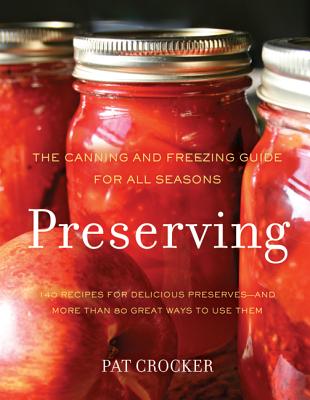
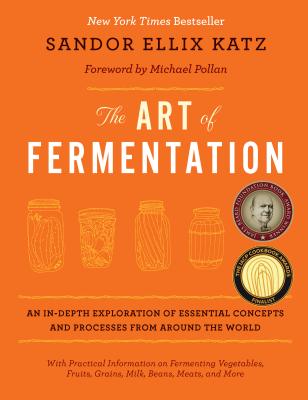
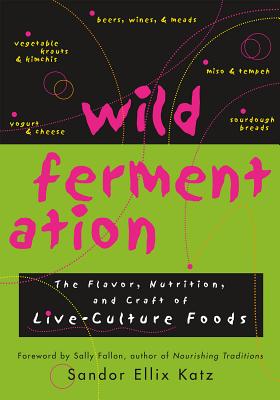

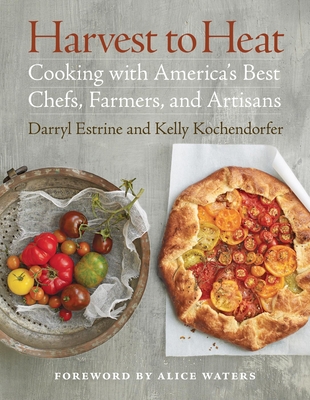
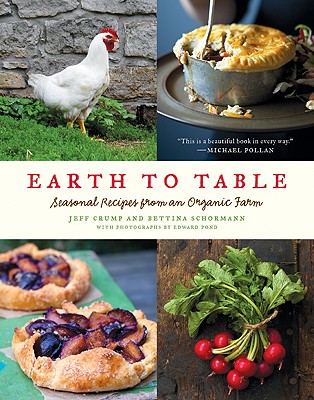
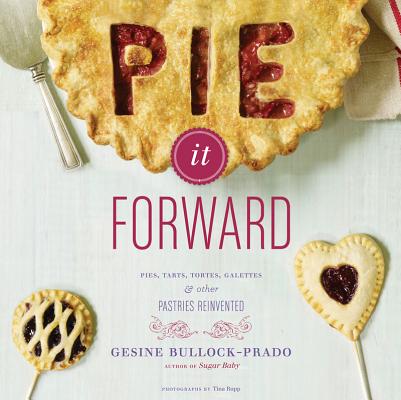
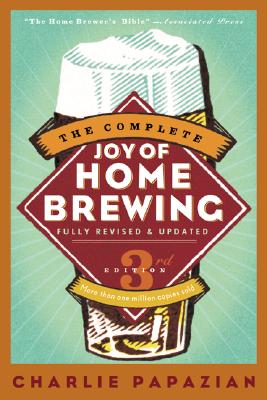
No comments:
Post a Comment